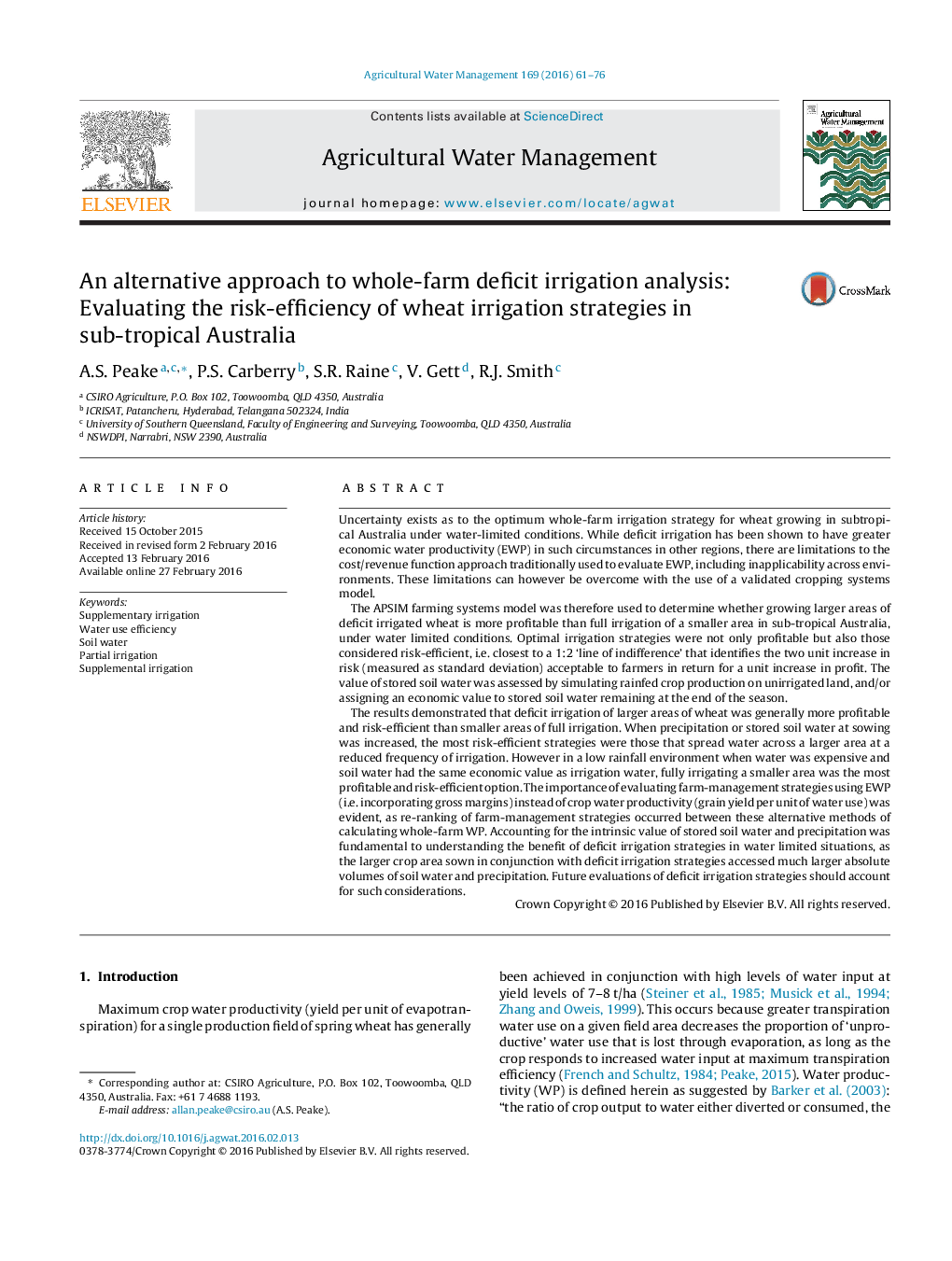| Article ID | Journal | Published Year | Pages | File Type |
|---|---|---|---|---|
| 4478279 | Agricultural Water Management | 2016 | 16 Pages |
•Risk-efficiency of irrigation strategies was assessed using the APSIM model.•Deficit irrigation (DI) was usually more risk-efficient than full irrigation.•DI strategies accessed greater volumes of stored soil water and precipitation.•Valuation of non-irrigation water decreased the perceived advantage of DI strategies.•Full irrigation was more profitable only in a dry location with expensive irrigation water.
Uncertainty exists as to the optimum whole-farm irrigation strategy for wheat growing in subtropical Australia under water-limited conditions. While deficit irrigation has been shown to have greater economic water productivity (EWP) in such circumstances in other regions, there are limitations to the cost/revenue function approach traditionally used to evaluate EWP, including inapplicability across environments. These limitations can however be overcome with the use of a validated cropping systems model.The APSIM farming systems model was therefore used to determine whether growing larger areas of deficit irrigated wheat is more profitable than full irrigation of a smaller area in sub-tropical Australia, under water limited conditions. Optimal irrigation strategies were not only profitable but also those considered risk-efficient, i.e. closest to a 1:2 ‘line of indifference’ that identifies the two unit increase in risk (measured as standard deviation) acceptable to farmers in return for a unit increase in profit. The value of stored soil water was assessed by simulating rainfed crop production on unirrigated land, and/or assigning an economic value to stored soil water remaining at the end of the season.The results demonstrated that deficit irrigation of larger areas of wheat was generally more profitable and risk-efficient than smaller areas of full irrigation. When precipitation or stored soil water at sowing was increased, the most risk-efficient strategies were those that spread water across a larger area at a reduced frequency of irrigation. However in a low rainfall environment when water was expensive and soil water had the same economic value as irrigation water, fully irrigating a smaller area was the most profitable and risk-efficient option. The importance of evaluating farm-management strategies using EWP (i.e. incorporating gross margins) instead of crop water productivity (grain yield per unit of water use) was evident, as re-ranking of farm-management strategies occurred between these alternative methods of calculating whole-farm WP. Accounting for the intrinsic value of stored soil water and precipitation was fundamental to understanding the benefit of deficit irrigation strategies in water limited situations, as the larger crop area sown in conjunction with deficit irrigation strategies accessed much larger absolute volumes of soil water and precipitation. Future evaluations of deficit irrigation strategies should account for such considerations.
